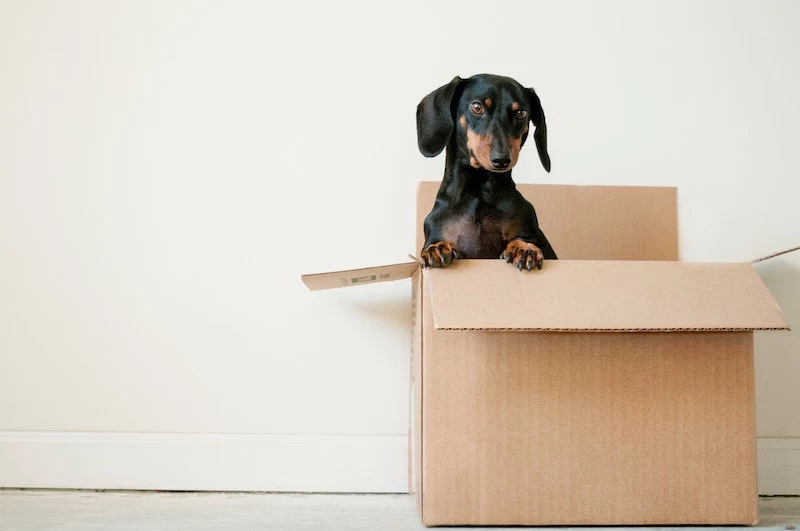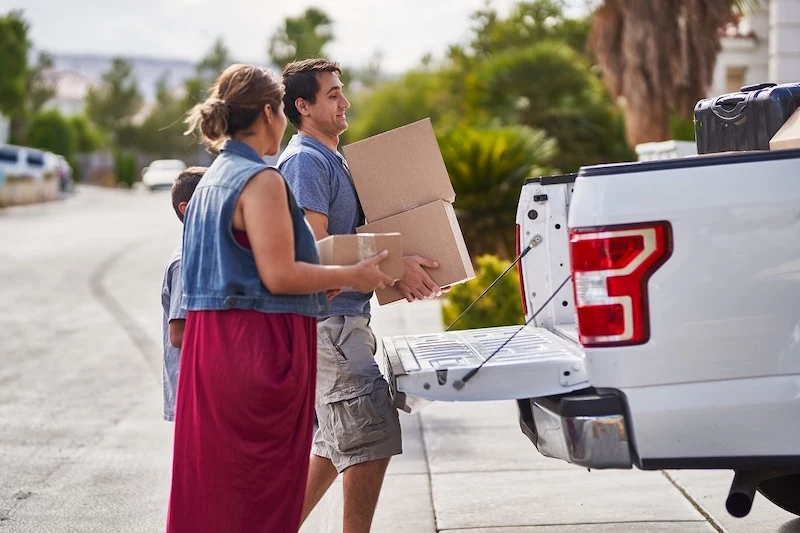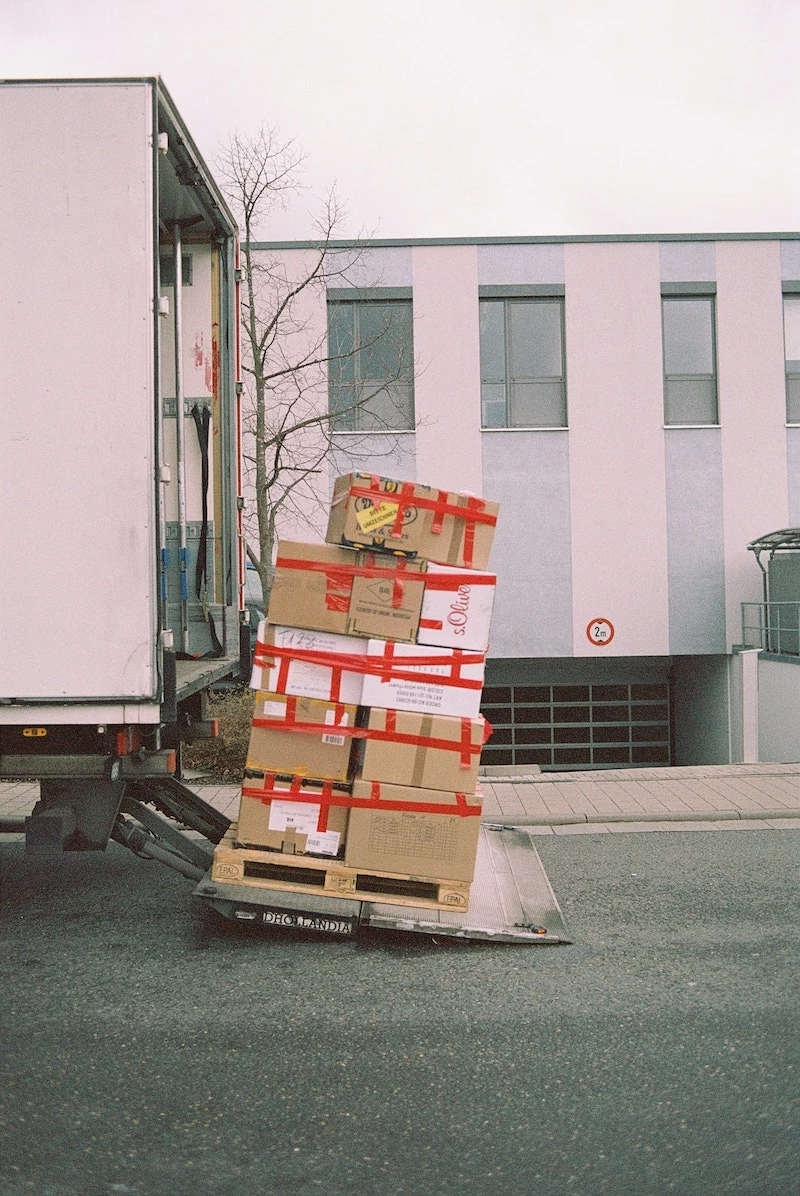A Pro Mover’s Playbook for a Sanity-Saving Relocation
Alright, let’s be honest. Moving is one of those things we all have to do, but nobody really enjoys. I should know—I’ve been in the logistics and moving game for a long, long time. I’ve seen the good, the bad, and the truly disastrous. I’m talking about picture-perfect cross-country moves on one hand, and a guy trying to move a three-bedroom house in his buddy’s pickup truck on the other (spoiler: it ended with a smashed sofa and a trip to the ER).
In this article
The difference between success and chaos isn’t luck. It’s having a solid plan. Most of the stress from moving comes from a thousand tiny decisions hitting you all at once. My goal here is to hand you the playbook the pros use. This isn’t just a list of tips; it’s the system I teach my own crews to make sure every job is smooth, safe, and predictable.

The Blueprint: What to Do Before a Single Box Is Taped (8 Weeks Out)
The best moves are won long before the truck even pulls up to the curb. If you feel like you’re scrambling, it’s almost always because the planning phase was rushed. Think of this as laying the foundation for a stress-free move. Don’t skip it!
Your Moving HQ: The Command Center Binder
I know we live in a digital world, but trust me on this: when your phone is dead, your laptop is packed, and you can’t remember the mover’s contact number, you’ll thank me. Get a simple three-ring binder. This is your physical headquarters, and it stays with you, not in a box.
Here’s what goes inside:
- Your Master Plan: All your checklists and timelines.
- Paper Trail: Printed copies of all quotes, contracts, and especially the final Bill of Lading.
- Receipts: Keep every single one for moving supplies or services. Some of these expenses might be tax-deductible, so it’s worth tracking.
- Inventory List: A list of your high-value items. It’s also a great idea to snap photos of them on your phone as a backup.
- Key Contacts: A single sheet with numbers for your mover, real estate agents, utility companies, etc.
Having this binder in your hands gives you a sense of control that is absolutely priceless on a hectic moving day.

The Great Purge: Don’t Pay to Move Junk
Every single item you move costs you time and money. I’ve seen people pay hundreds of dollars to transport boxes that went straight from our truck into a storage unit, never to be seen again. It’s a total waste. Be ruthless.
Go through your home room by room with a simple four-category system:
- Keep: You use it, you love it, and it has a place in your new home.
- Sell: It’s in good shape but you don’t need it. Facebook Marketplace, Craigslist, or a good old-fashioned garage sale can put some cash in your pocket.
- Donate: Give it a second life and help someone out. Just make sure to get a receipt for tax time.
- Toss: Anything that’s broken, expired, or just plain junk.
Quick tip: Start with the places you store things, like the attic, garage, or basement. That’s where the “out of sight, out of mind” stuff lives. Be honest with yourself—is that old exercise bike really worth $50 of moving truck space?

How to Hire Movers Without Getting Scammed
This is probably the most critical decision you’ll make in the entire process. A great moving company is your partner. A bad one can turn your life into a nightmare.
First, you need to know who you’re talking to. There are two main players: carriers and brokers. A carrier is the actual moving company with their own trucks and crew. A broker is a middleman who sells your moving job to a carrier—often the one who bids the lowest. While some brokers are legitimate, it can be a real roll of the dice. Your best bet is almost always to work directly with a carrier. Ask them point-blank: “Are you a carrier or a broker?”
For any move between states, a real moving company must have a USDOT number. You can look this up online on the Federal Motor Carrier Safety Administration (FMCSA) website to check their complaint history. Don’t skip this. It takes five minutes and can save you a world of hurt.

Heads up! Watch out for these red flags:
- The quote is wildly lower than everyone else’s.
- They demand a large cash deposit upfront.
- They answer the phone with a generic “Movers” or “Moving company” instead of a specific business name.
- They don’t offer to do an in-person or video survey and give you a quote over the phone, sight unseen.
Decoding the Estimate
You’ll likely get one of three types of estimates. Knowing the difference is your best defense against surprise charges. A non-binding estimate is just a guess; the final price could be higher. A binding estimate is a locked-in price, which is much better for budgeting. But the gold standard is a binding not-to-exceed estimate. This gives you a guaranteed ceiling on the price, but if your stuff weighs less than they estimated, the cost actually goes down. It’s the best of both worlds for you.
And let’s talk real numbers for a second. Look, every move is different, but to give you a rough idea, a local move for a 2-bedroom apartment might run you $800 to $1,500. A cross-country move for that same apartment could be anywhere from $4,000 to $7,000. If your quote is half of that, your red flag radar should be screaming. Professional service has a real cost.

The Art and Science of Packing (6-2 Weeks Out)
Packing isn’t just about putting stuff in boxes; it’s a skill. The goal is to get your belongings to the destination in one piece, and that means using the right gear and the right techniques.
Your Mover’s Shopping List
Don’t cheap out and grab used boxes from the liquor store. They aren’t standard sizes, which makes them a nightmare to stack securely in a truck, and you never know if they’re clean or compromised by moisture. Investing a little in proper supplies pays off big time. You can find everything at places like Home Depot, U-Haul, or online.
- Small Boxes (1.5 cu ft “Book Box”): These run about $2 each. They’re for heavy things like books, tools, or canned goods. Seriously, keep them under 40 pounds. Your back will thank you.
- Medium Boxes (3.0 cu ft): The versatile workhorse for pots, pans, toys, and electronics.
- Large Boxes (4.5 cu ft): ONLY for light and bulky items like pillows, blankets, and lampshades. Never put books in these!
- Dish Packs: These have thick, double-walls and are worth every penny for protecting your kitchenware.
- Wardrobe Boxes: These are basically portable closets and cost around $15 each. Pricey, but a massive time-saver for your nicest clothes.
- Packing Tape: Get the good plastic stuff, not duct tape. A roll is about $3, and you will always need more than you think.
- Packing Paper: A big bundle of unprinted newsprint is your best friend. Don’t use actual newspaper unless you want black ink all over your stuff.
How to Pack a Box Like a Pro
The #1 enemy of your breakables is empty space. When the truck hits a pothole, anything in a half-empty box becomes a projectile. Every box needs to be packed solid.
- Build a Nest: Start with a 2-3 inch layer of crumpled packing paper at the bottom.
- Wrap Everything: Wrap fragile items individually. Pro tip for plates: pack them on their edges, like records in a crate. They’re much stronger that way.
- Heavy to Light: Heavy items go on the bottom, lighter ones on top. It seems obvious, but it’s the golden rule.
- Fill Every Gap: This is the crucial step. Tuck crumpled paper into every nook and cranny. When you gently shake the box, nothing should move.
- Top It Off: Add another layer of crumpled paper on top before you seal it. The box flaps should close flat. If they bulge, it’s overpacked; if they sink in, it’s under-packed and will get crushed.
Oh, and here’s a great little time-saver: For your silverware tray, don’t empty it. Just wrap the whole thing, silverware and all, with Press’n Seal plastic wrap. It’s ready to go right into a drawer in your new kitchen.
The Labeling System That Actually Works
Writing “Kitchen” on a box is basically useless. You’ll still have to open ten boxes just to find the coffee maker. Get a thick black marker and on the top and at least two sides of every box, write the destination room, a brief summary of the contents (e.g., “Pots & Pans”), and a big, bold “FRAGILE” if needed.
By the way, here’s a game-changer: color-coding. Assign a color to each room (e.g., yellow for kitchen, blue for master bedroom). Get a pack of colored sticker dots and put a sticker on every box. Then, put a matching sticker on the doorframe of the correct room in the new house. This lets the movers place boxes quickly without having to stop and read every label.
The Final Stretch and Moving Day (2 Weeks Out to D-Day)
Okay, things are about to get real. This is all about tying up loose ends and making sure moving day itself is organized chaos, not just chaos.
Ticking Off the Admin Boxes
- Change of Address: Do this with the post office about a week or two out. Also, remember to update your address with your bank, credit cards, and any subscription boxes.
- Utilities: Schedule your utilities (gas, water, internet) to be shut off at the old place the day after you move out and turned on at the new place the day before you arrive. Trust me, walking into a new home with no power or running water is a terrible start.
- Kids and Pets: A moving site is a dangerous place for them, with open doors and heavy things moving around. Arrange for them to stay with a friend, family, or at a kennel for the day. It’s safer and less stressful for everyone.
The “First 24-Hour” Survival Kit
This is non-negotiable. Get a clear plastic tub or a brightly marked box and DO NOT let the movers put it on the truck. This kit stays with you in your car.
Pack it with everything you’ll need for the first 24 hours in your new home:
- Medications and a basic first-aid kit
- Phone chargers
- Toilet paper, paper towels, and hand soap
- A change of clothes and basic toiletries for everyone
- A box cutter and scissors
- Snacks, bottled water, and yes, the coffee maker
- Pet food and bowls
Your Role on Moving Day: Project Manager
When the crew arrives, do a quick walk-through with the foreman. Point out what’s going and what’s not, and highlight any particularly fragile items. You’ll sign the Bill of Lading, which is your contract. Read it. Make sure it’s not blank or incomplete before you sign.
A good crew will immediately start protecting your home by putting down floor runners and padding banisters. This is a great sign.
And now, the question everyone secretly stresses about: tipping. There’s no hard rule, but a good guideline is to tip about $4-$5 per mover, per hour of work. Alternatively, if you’re really happy with the service, 15-20% of the total bill, divided among the crew, is a great gesture. Honestly, though? Having cold bottled water and maybe some pizza for them at lunch goes a long, long way in showing your appreciation.
The Unpack: Turning a House into a Home
You made it! The truck is here. A little strategy now will get you settled in way faster.
- Play Traffic Cop: Use your color-coded signs to direct the movers as they bring boxes in.
- Beds First: The first thing you should assemble and unpack is your bed. A good night’s sleep will make everything else feel more manageable.
- Kitchen Second: Get the coffee maker going, then unpack a few essential pots, plates, and utensils.
- Bathrooms Third: Set up a shower curtain, towels, and soap.
- One Room at a Time: Resist the urge to open boxes randomly. Pick a room and finish it completely. Break down the empty boxes as you go to clear space and maintain your sanity.
Before the crew leaves, do a quick inspection of your furniture for any obvious dings or scratches. If you see something, note it on the paperwork before you sign off. You usually have some time to file a claim for damage you find later, but the sooner, the better.
A Final Word on Safety
Look, your stuff is just stuff. Your health is what matters. Always lift with your legs, not your back, and never overpack boxes. But the biggest safety rule is this: Movers are legally forbidden from transporting hazardous materials. This means things like propane tanks, paint, gasoline, fireworks, and harsh cleaning chemicals.
You need to dispose of these items properly before you move. Don’t just chuck them in the trash. The best way to do this is to search online for “[Your City] + household hazardous waste disposal” to find a local drop-off site. It’s a pain, but I’ve seen what a truck fire caused by improperly packed chemicals can do. It’s not worth the risk.
Moving is a huge undertaking, but it’s also a fresh start. With the right process, you can get through it like a pro. Good luck!
Inspirational Gallery with Photos
The secret to a calm first night? The “Open First” box. Don’t just label it; make it visually distinct with colored duct tape. This isn’t for unpacking, it’s for survival. Pack it with essentials for your first 24 hours in the new place: a toolkit with a screwdriver and box cutter, toilet paper, paper towels, basic toiletries, phone chargers, medications, a couple of water bottles, and instant coffee. Trust me, you’ll feel like a genius when you’re not tearing through ten boxes just to find a toothbrush.
The American Moving & Storage Association estimates that the average move generates about 30 pounds of trash per person, much of it single-use packing material.
To combat this, consider renting reusable plastic bins from companies like Frogbox or U-Haul’s Ready-To-Go Boxes. They’re sturdy, stack perfectly, and require no tape. You use them, and the company picks them up to be cleaned and reused. It’s a simple switch that significantly reduces your move-out mountain of cardboard and plastic waste.
How do you move your beloved houseplants without a botanical catastrophe?
For most leafy friends, the key is to re-pot them into lightweight plastic containers a few weeks before the move. On moving day, pack them snugly into a box with crumpled paper to prevent tipping, but leave the top open for air. Punch a few air holes in the sides of the box. Most importantly, transport them in your own car, not the moving truck, where temperatures can swing dramatically.
- Protects delicate finishes from scratches and dings.
- Keeps drawers and cabinet doors securely shut.
- Prevents small hardware or parts from getting lost in transit.
The pro secret for furniture prep? Industrial stretch wrap. Unlike tape that can ruin wood finishes, a few layers of a product like Duck Brand Stretch Wrap clings only to itself, creating a protective cocoon around dressers, nightstands, and bookcases.
Don’t forget the digital move. Weeks before you relocate, start updating your address with online services. Think beyond the post office and utilities. Your Amazon account, food delivery apps like DoorDash, subscription boxes, and any service with a saved address need to be switched over. A forgotten update can lead to your packages being sent to the old residents.
According to the Bureau of Labor Statistics, sprains and strains from overexertion are the most common moving-related injuries.
Classic Cardboard: Inexpensive (often free), universally available, and recyclable. However, they can crush under weight and are vulnerable to moisture. Perfect for lighter items like linens and toys.
Rental Plastic Bins: Extremely durable, stackable, and water-resistant. Services like Redi-Box deliver and pick them up. The cost is higher, but there’s zero waste and they protect fragile items far better.
For a hybrid approach, use plastic for the kitchen and electronics, and cardboard for everything else.
Before the final box is taped, take a moment. Walk through the empty rooms one last time. It’s easy to get caught up in the logistics, but leaving a home is an emotional process. Acknowledge the memories made in that space. This small ritual provides a sense of closure, allowing you to look forward to the new chapter with a clear head and a full heart.
The Mover’s Insurance Myth: Basic liability coverage (what movers must provide by law) is often just 60 cents per pound. That means your 50-pound flat-screen TV would only be covered for $30. Always ask your moving company about Full Value Protection options or check if your homeowner’s insurance policy offers a moving rider. Never assume you’re fully covered.
Get your inventory list done faster and more accurately. Instead of writing everything down, use an app like Sortly. You can quickly create a visual inventory by snapping photos of your items, adding them to specific boxes or rooms, and even noting their value. On arrival, you have a visual checklist to ensure everything made it in one piece.










